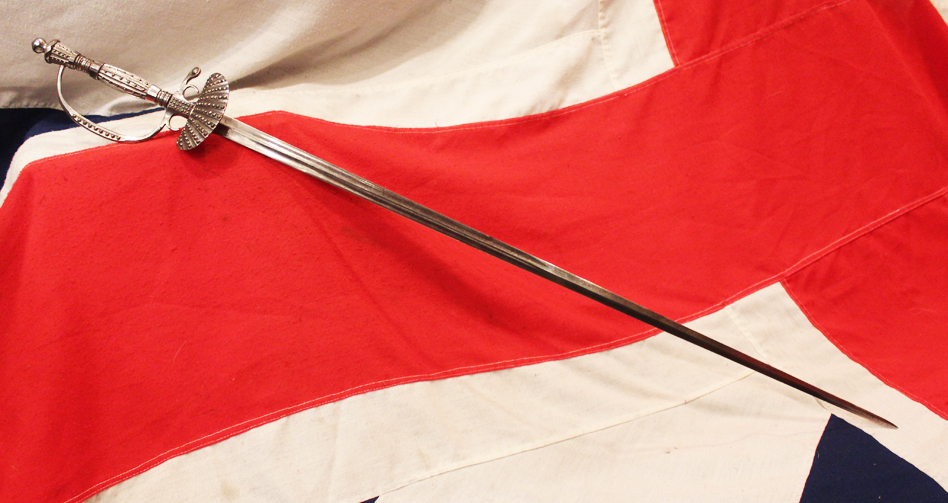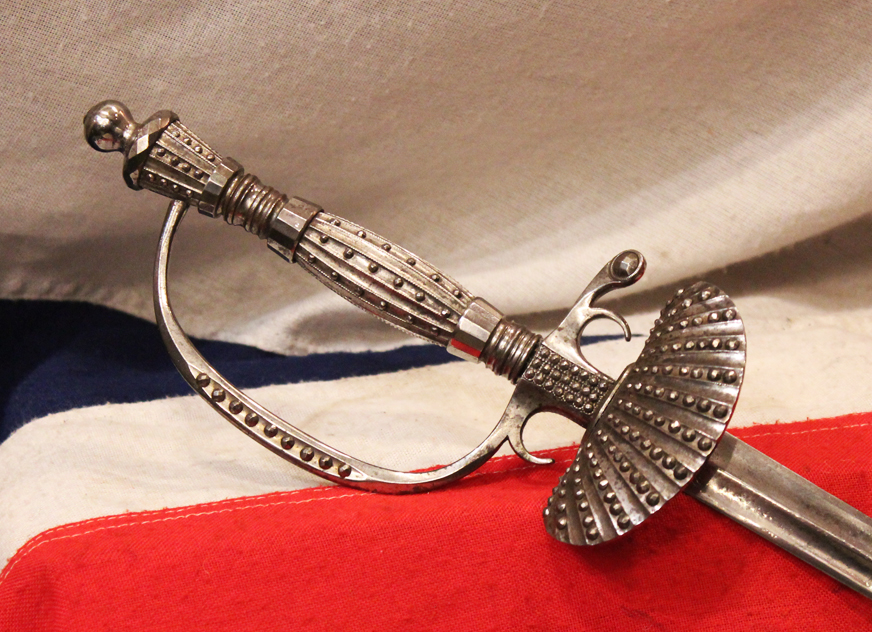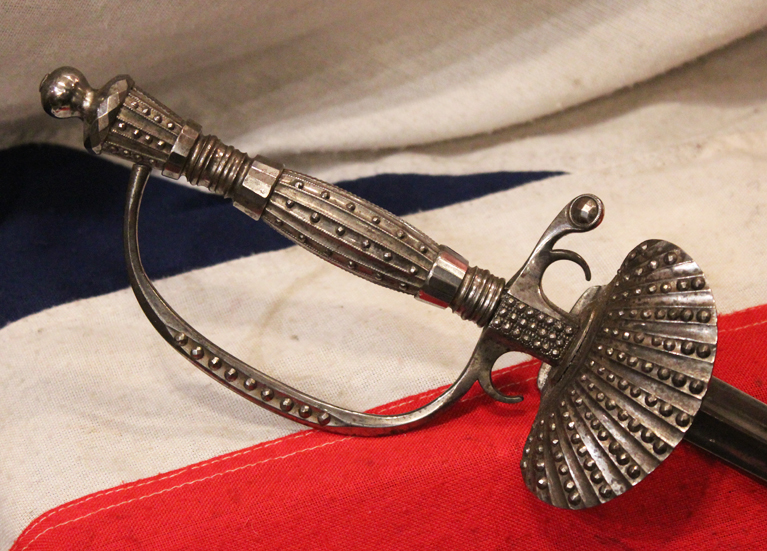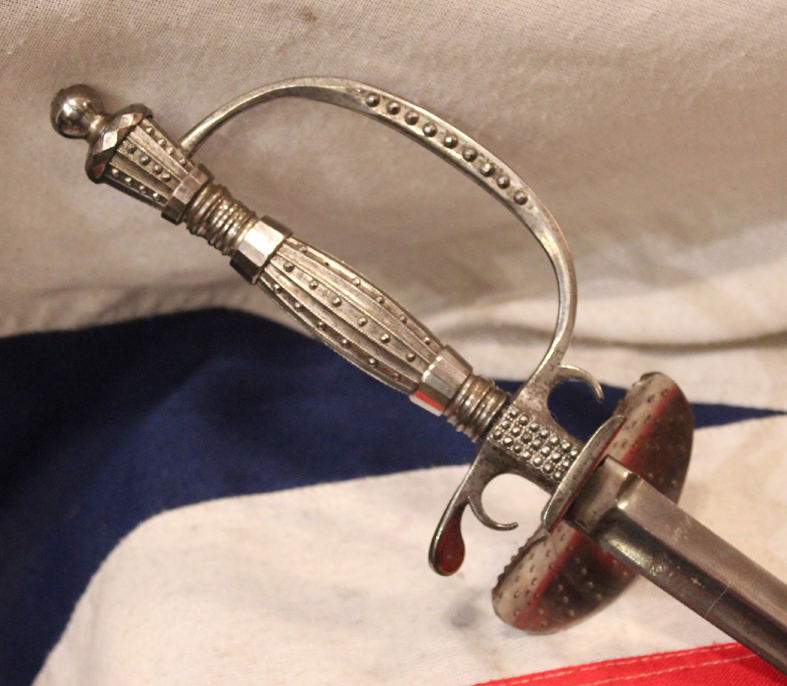An Early 19th Cut Steel Small Sword with a Klingenthal Trefoil Blade
Adam style pommel with single knuckle bow pas dans and quillon. In the conservation workshop. Shell guard inlaid with a geometric pattern of a cut steel facetted nail head design. The small sword or smallsword is a light one-handed sword designed for thrusting which evolved out of the longer and heavier rapier of the late Renaissance. The height of the small sword's popularity was between mid 17th and late 18th century. It is thought to have appeared in France and spread quickly across the rest of Europe. The small sword was the immediate predecessor of the French duelling sword (from which the epee developed) and its method of use as typified in the works of such authors as Sieur de Liancour, Domenico Angelo, Monsieur J. Olivier, and Monsieur L'Abbate developed into the techniques of the French classical school of fencing. Small swords were also used as status symbols and fashion accessories; for most of the 18th century anyone, civilian or military, with pretensions to gentlemanly status would have worn a small sword on a daily basis.
The small sword could be a highly effective duelling weapon, and some systems for the use of the bayonet were developed using the method of the smallsword as their foundation; Alfred Hutton, an English officer of the King's Dragoon Guards, wrote extensively on self-defense techniques based on the short sword-bayonet.
Militarily, small swords continued to be used as a standard sidearm for infantry officers.
As a rule, the blade of a small sword is comparatively short at around 0.6 to 0.85 metres (24 to 33 in), though some reach over 0.9 metres (35 in). It usually tapers to a sharp point but may lack a cutting edge. It is typically triangular in cross-section, although some of the early examples still have the rhombic and spindle-shaped cross-sections inherited from older weapons, like the rapier. This triangular cross-section may be hollow ground for additional lightness. 31 inch blade.
Code: 20683






